Archived Blog Posts
Why does my toilet leak every time I flush?
11/9/2022 (Permalink)
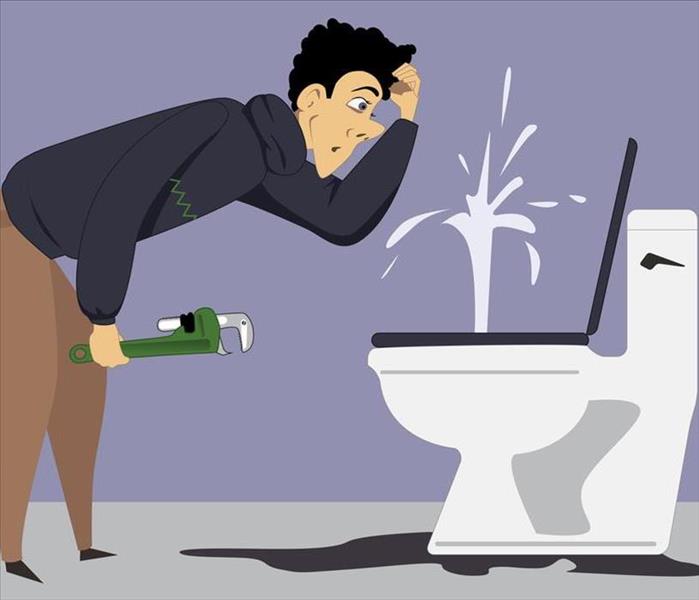 If you are experiencing a toilet leak and you can't fix it call a professional.
If you are experiencing a toilet leak and you can't fix it call a professional.
Why Does My Toilet Leak Every Time I Flush?
You can fix most toilet leaks yourself with a little elbow grease (and maybe some plumber's putty). In this post we'll discuss why toilets leak and how to tell if you have a leaky tank or bowl.
Toilets leak for a lot of reasons.
You’re not alone. Many people have experienced a toilet leak, and it can be difficult to determine why it happens. There are many reasons that a toilet might leak, including:
- A clogged drain line
- A loose flapper or flush handle
- A leaking shut off valve on the tank
- A cracked or broken tank
1. Dry wax ring or improper installation.
If your toilet leaks every time, you flush it, you may have a leaky wax ring.
The wax ring is a rubber or PVC device that fits between the toilet bowl and the floor to prevent leaks from occurring. When properly installed and maintained, it should last for about two years before needing replacement. Leakage can often occur once the wax ring ages and or due to improper installation.
2. Tank flange can be broken or tank not tightened.
If you've tried to diagnose the leak and determined it's coming from your tank, then the problem could be that:
- Your tank flange is broken or not tightened properly. This will allow water to run down into the bowl of your toilet. The flange is a metal piece that sits between the tank and bowl, giving you a tight seal against leaks.
- Your toilet isn't level, causing one side of your toilet to be higher than another (often due to uneven flooring). If this happens, water can run out of one side when flushed since there's no longer an airtight seal around the toilet base.
- Your support is broken or not installed properly and cannot withstand heavy usage without falling apart under repeated use or shifting over time.
3. A worn out, cracked or damaged flapper, which is the most common reason for a leaking toilet tank.
The most common reason for a leaking toilet is a worn-out, cracked, or damaged flapper. The flapper is the rubber seal that keeps the water in your tank and not on your floor. Replacing it yourself takes only a few minutes and costs less than $10 at hardware stores. If you don't feel comfortable doing that yourself, you can have a plumber replace it for about $50-$100.
4. A tilted or loose toilet bowl may cause water to slowly leak from the base of the toilet and pool in the bathroom floor around the toilet.
If your toilet is leaking, either water is coming out of the base of the toilet or there is a pool of water around it. In both cases, you should check to make sure that the bowl isn't tilted or loose.
If your floor is not level, this can cause your toilet bowl to become tilted. To fix this problem, adjust the bolts connecting your toilet to its base until they're barely touching each other.
If your floor has shifted or moved over time and no longer supports your toilet securely, it could be loose and therefore prone to leaking. In this case, unclamp from under any pedestals that support it and then gently lift on all four sides until it's level again before replacing any clamps or pedestals you removed in order for them not to get lost down there somewhere!
5. Condensation on a toilet tank is another possibility if you see droplets of water underneath or on your tank lid, along with damp walls and floors around your toilet.
If you're noticing condensation on your toilet tank, it's not always a sure sign that the leak is coming from inside the toilet. Condensation can be caused by several factors:
- A leaking roof or window AC unit outside of your bathroom
- A faulty humidifier in another room that's sending moisture into your walls and flooring
- An air-conditioner is running constantly and adding humidity to the air in your house.
6. A damaged shut-off valve causing a drip at the angle stop of your toilet supply line, where it’s attached to the angle stop (wall shut off) just below the tank, which generally means that you have a slow leak in your toilet supply line.
If none of the above suggestions have resolved your leak, it could be that there is a problem with the actual shut-off valve or supply line itself. The first step to finding this out is to check for leaks in each of these components:
- Shut off valve
- Angle stop (wall shut-off) just below tank
- Supply line from shut off valve to wall and/or floor drain connection. Check for kinks in lines, cracks in PVC pipes, and breaks in copper pipes.
The good news is that most of these problems can be fixed quickly and easily. All it takes is a little know-how, some time, and patience—and maybe even a sense of humor!
What does commercial property insurance policy cover?
10/6/2022 (Permalink)
 Is your commercial property covered by insurance?
Is your commercial property covered by insurance?
What Does A Commercial Property Insurance Policy Cover?
Commercial property insurance is one of the most confusing types of insurance policies. This is because there are so many different sub-types of coverage and so many ways that the policy can be customized. In this article, we're going to go through each type of commercial property coverage so that you know exactly what your policy covers.
Understanding what a commercial property insurance policy covers can be confusing.
You understand that a property insurance policy covers the physical structure of your building, but what about all the other important aspects of owning a business? A commercial property insurance policy also provides coverage for:
- Business income - you'll be reimbursed for any lost income if your business must close temporarily due to damage from an insured peril
- Building ordinance or law - this protects against legal expenses when you must comply with new building ordinances and laws
- Personal property inventory can be covered up to $100,000 under most policies
There are three types of coverage on a commercial property insurance policy.
These include business income, commercial property, and building ordinances or laws.
- Business income: This coverage reimburses you for your business's operational costs if it has been shut down due to damage caused by fire or smoke, theft, vandalism, or other covered perils.
- Commercial property: This coverage protects against losses if insured properties are damaged or destroyed by covered perils like fire and vandalism.
- Building ordinance or law: It pays for expenses related to rebuilding damaged structures under local laws and ordinances when they're in compliance with those laws at the time of loss.
The first coverage is Commercial Property.
The first coverage is commercial property. Commercial property insurance covers the building and the land on which it sits. It covers you for fire damage or natural disasters, but it also covers your own negligence and vandalism. The policy will also cover losses caused by theft, wind damage, water damage from plumbing issues, or floods caused by weather events like hurricanes or tornadoes. This can be a combination policy that includes separate coverage for each component of your building:
If one part of your building is damaged in an accident or disaster, then that portion will be covered under its own specific policy limit (the amount of money assigned to pay for damages associated with certain types of damages).
The second coverage of the policy is Building Ordinance or Law.
A building ordinance or law coverage on a commercial property insurance policy is required by most cities and counties where you operate your business. It provides protection from liability for any damage that may result from violating local codes. This coverage is also often required by lenders to secure financing.
The third coverage is Business Income for business owners with retail, office, or other types of service space.
If you are a business owner, buying this coverage is highly recommended. Business income coverage protects a business against loss of income due to direct physical damage or interruption of business because of a covered peril. This policy pays the business owner's net operating profit during the period in which their property was damaged, and they could not conduct normal operations.
Business income covers losses that occur during the following time periods:
- From the date of loss to the date when your building is repaired or replaced and ready for normal use
- From the date when it becomes impossible for you to conduct your regular trade or profession because of an insured peril until it becomes possible again
The most confusing type of coverage is Commercial Property because there are so many sub-types of coverage involved.
The most confusing type of coverage is Commercial Property because there are so many sub-types of coverage involved. There are two main categories: fire and water damage, which can be further broken down into several other types of damage. Commercial property insurance is the most confusing because it addresses all the different types of accidents that could happen to your building or property and the things inside it.
At the end of the day, commercial property insurance is an important protection for your business. If something happens to your building or inventory, it’s essential that you have enough coverage to cover any expenses related to repairs or replacement.
FAQs About Mold Damage
8/25/2022 (Permalink)
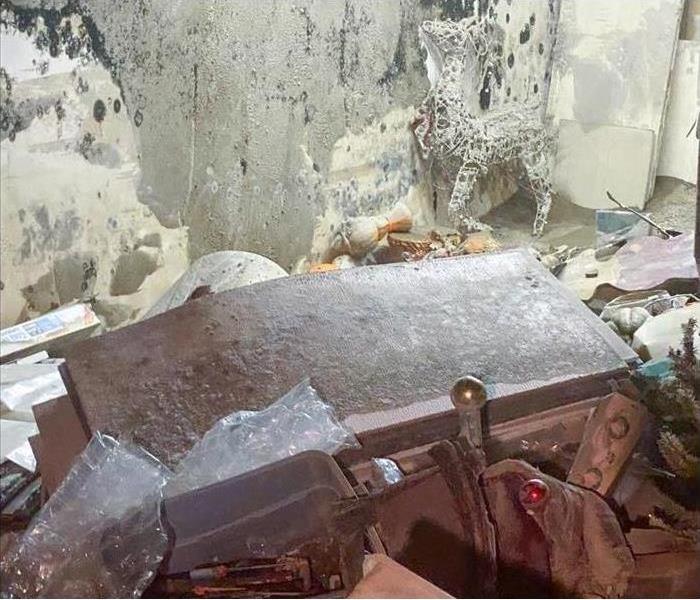 Mold and moisture go hand in hand.
Mold and moisture go hand in hand.
If a storm has caused flooding in your Puyallup, WA business, you have approximately one to two days to act if you want to prevent mold growth. Since mold can destroy your building, you want to act. Here are some answers to frequently asked questions about the prevention of mold after a storm.
What Steps Can You Take To Prevent Mold and Water Damage?
When dealing with standing water after a flood, there are some basic things you need to do immediately before help arrives. This includes:
- Turning off the water
- Turning off the HVAC units
- Turning off the fans
- Pick up any irreplaceable items from the floor
- Move furniture and equipment out of the wet areas
Can Business Owners Dry Water by Themselves?
While you may believe you can prevent mold growth by setting up fans and shop vacs to remove the water, you are not actually getting all of the moisture. Instead of attempting this on your own, you should hire a storm remediation company with the proper tools to dry your building.
Does Water Always Lead To Mold?
When your business has not dried out within 24 hours of the disaster, mold growth is certain. Despite folk tales, mold grows without discrimination, no matter the season. In other words, unless you experienced minimal water intrusion, it is almost guaranteed that you will get mold after flooding.
Can You Remove Mold Yourself?
Although most people will attempt to kill mold with bleach, you will likely do more damage using this method. In other words, you should avoid removing mold yourself and hire a professional with the proper cleanup methods.
Can Mold Die When It Dries?
Mold does not die when it dries up. When there is no moisture, it simply goes dormant. Once dormant mold finds more moisture, it starts to grow. Unless you remove it, you will not remedy it by leaving it alone.
As a business owner, you want to protect your site from mold and other harmful bacteria. Therefore, you need to know more about flooding and mold.
How To Stay Safe During a Flood
8/24/2022 (Permalink)
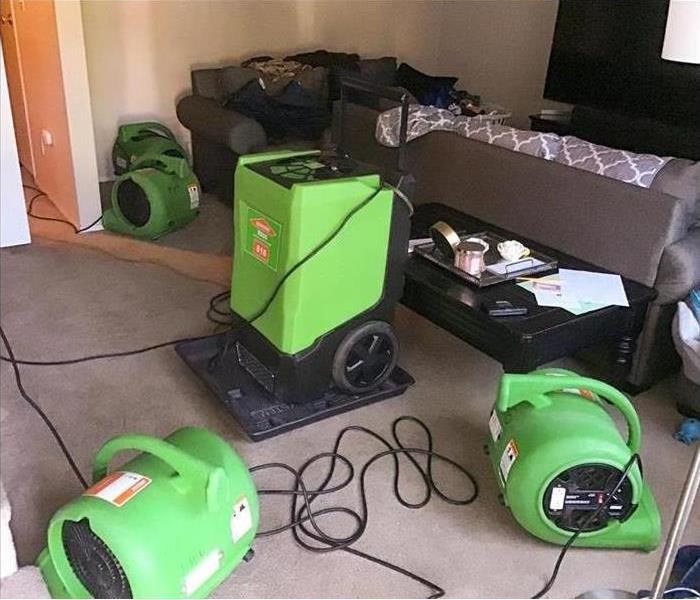 Let us help when you experience storm damage.
Let us help when you experience storm damage.
Flood Safety Tips
Storms can create unexpected circumstances in Sumner, WA. One minute your home may be fine, but the next you have rising waters in your basement. Because the situation can change so quickly, you need to know how to stay safe during a storm-caused flood. Keep these flood safety tips in mind whenever bad weather approaches.
Stay Out of the Water
Did you know that as little as six inches of moving water can cause you to lose your balance? Because it doesn't take high waters, you need to be careful whenever you have to walk through any type of flood. If you must walk through a flood, keep these safety tips in mind:
- Use a walking stick.
- Hold on to something sturdy.
- Walk quickly and cautiously.
While the waters may not be moving in your house, they can still pose a health and safety risk. However, as a homeowner, you cannot always avoid the flooded parts of your space. You also want to avoid standing water outside of your house even if you're in your car.
Avoid Electrical Equipment
Water conducts electricity, so you want to avoid electrical equipment whenever you are in standing water. If you know there is electricity running through your basement flood, you should turn off the power to your home before anyone enters the lower levels for the best flood safety. Even if you are damp and not currently in water, you should avoid the electricity.
Call for Help
Storm-caused flooding can trap you in the upper levels of your home. If you need emergency help during a storm, you should call someone as soon as you can. After the danger has passed, you may need help restoring your home. Getting in touch with storm restoration services can make your cleanup process much easier.
The heavy rains of a storm may cause flooding in Sumner, WA. Knowing the best flood safety techniques can keep you and your home in one piece during a disaster.
5 Common Types of Household Mold
8/15/2022 (Permalink)
5 Common Types of Household Mold
It's not uncommon to discover mold growing in your Puyallup, WA, home. Mold growth can occur under several different circumstances, depending on the type of fungi in question. Before you begin your mold remediation process, you should identify which species is the culprit.
1. Stachybotrys
More commonly referred to as the infamous black mold, Stachybotrys is perhaps the most common type of residential mold. Much like the name implies, it has a dark green or black color and may feel slimy to the touch. It's very common in places that come into frequent contact with water, or in areas that have recently suffered some form of water damage.
2. Alternaria
This species of mold is often confused for black mold, as it thrives under the same damp or high humidity conditions, has a very similar appearance and is just about as common as its cousin. Instead of feeling slimy, Alternaria has an almost velvety texture due to the wispy dark green or brown hairs that sprout on its surface.
3. Chaetomium
Once again, this type of mold growth is quite common in water damaged structures. When it first appears, it boasts a white or gray color before slowly fading to dark brown or black over time. You're more likely to smell this species before you see it, due to its musty odor.
4. Aureobasidium
You should check for this type of fungus behind your wallpaper or on painted wooden surfaces. This mold appears pink or brown in color when it's young and slowly fades to black over time, much like chaetomium.
5. Cladosporium
This versatile species of mold can thrive in both warm and cold environments. You're most likely to find it growing in your carpeting, upholstery and other types of fabrics. It boasts a soft, suede-like texture and green coloring.
You could potentially find several different mold species growing in your home, so it's important that you know which common varieties to look for. Contact mold remediation experts like SERVPRO of Puyallup/Sumner for assistance if you do discover mold growth in your home.
How to Prevent Black Mold in Your HVAC System
7/25/2022 (Permalink)
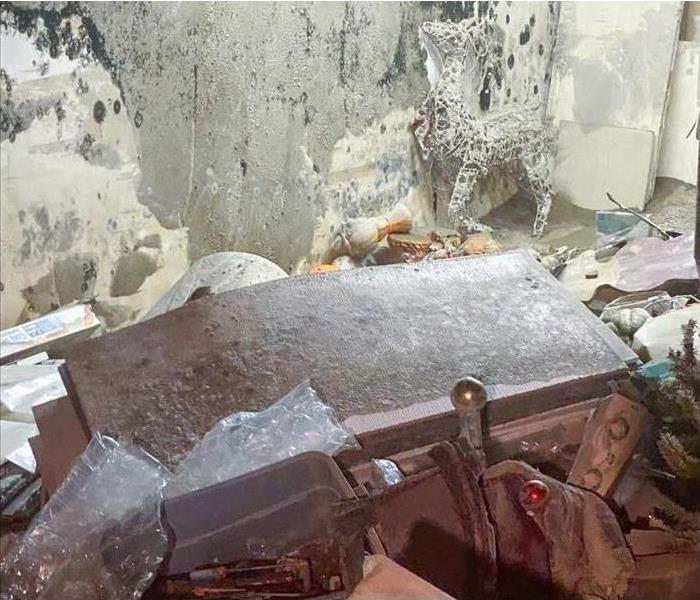 Walls in the basement were damaged by water and mold
Walls in the basement were damaged by water and mold
Black Mold Is Very Dangerous But Easily Preventable
By now, everyone has heard of black mold. In case you haven't, it is a dangerous form of toxic mold that grows in a variety of environments. It is named for its color and can cause a lot of effects, but there are ways to prevent it.
Keep Your Filters Clean
If you use replaceable filters, replace them every 30 to 60 days, depending on your business. If you have washable filters, make sure you wash them regularly with an approved mold preventative cleaner. Not only will this save you money in the long run, but it also prevents other issues.
Look for Wet Spots
Wet spots can appear in several ways. Some of these ways are:
- Brown spots
- Sweating ducts
- Grey areas
- Black spots
When you see wet spots, it is extremely important to dry them as soon as possible because black mold grows very quickly.
Have Your Ducts Professionally Cleaned
You should have your air ducts professionally inspected and cleaned at least twice per year. This should happen in the spring and fall and can prevent mold or mildew build-up. It isn't difficult to find mold cleaning companies in Enumclaw, WA.
Keep an Eye on Humidity
Assuming you have clean ducts, you can use a hygrometer to measure the amount of humidity in, on or near your ductwork. These instruments are not expensive and can be placed almost anywhere you need them. You can also use a portable meter to measure humidity in whatever area you need to.
Fix Water Damage Immediately
In the event of a flood or leak, fix the damage immediately. It takes just 24 to 48 hours for mold to start to grow. Damaged ductwork and drywall need to be removed and replaced before mold has a chance to form.
Black mold is very dangerous but easily preventable. With a little bit of work, you can stop a major problem before it starts.
The Importance of Tending to Both Primary and Secondary Damage
7/15/2022 (Permalink)
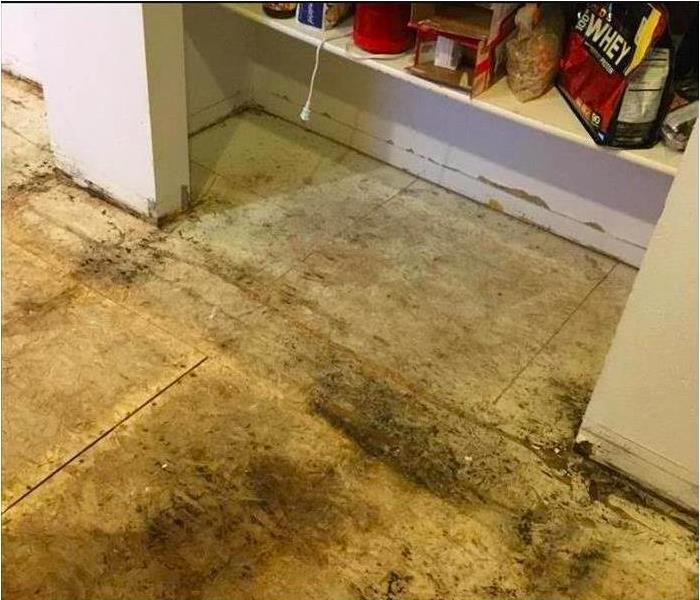 Water and mold damage in a South Hill, WA home
Water and mold damage in a South Hill, WA home
The Importance of Tending to Both Primary and Secondary Damage
Black mold is a fungus that thrives on dampness. When water penetrates something organic, it triggers the mold's development, permitting fast reproduction. Homeowners may concentrate on the mold but not think much about how it started. Both the source, though, and the result are significant. If one isn't fixed, then the other may just continue to reappear down the road; therefore, homeowners should be aware of the house's secondary and primary damage. When both are understood and cared for, the property can be properly restored.
What Is Primary Damage?
Something initiated the trouble, causing a level of high humidity or excess wetness. This is considered the primary cause. For example, any of the following would fall into the classification:
- Pipe burst
- Sewer backup
- Leaky faucet
- Missing shingles
A water restoration company in South Hill, WA, should investigate the premises, searching for the source. The experts then should shut off the water supply, fixing any plumbing issues. By taking this step first, the professionals mitigate the devastation.
What Is Secondary Home Damage?
Secondary complications stem from primary cause. A broken pipe, for example, allowed moisture to penetrate a space. When it soaked into the walls and flooring, the fluid started secondary concerns. Black mold, for example, might begin to grow. In addition, wood can rot, carpet can get contaminated and valuables are likely to become ruined.
The team tends to the secondary damage by extracting moisture, sanitizing the property and replacing spoiled items. Drenched dry wall and carpeting is pulled out. These porous materials are too difficult to fully clean. Instead, replacements are needed. Content cleaning can be applied to things that fall into the following categories:
- electronics
- pictures
- documentation
- fixtures
Speak with the crew about anything special. They can advise of the proper treatment.
Black mold isn't something you want in your home.
To keep it at bay, you'll want to be aware of primary water damage. With that under control, residents are less likely to suffer other headaches.
Can Employees Resume Work During Restoration?
7/8/2022 (Permalink)
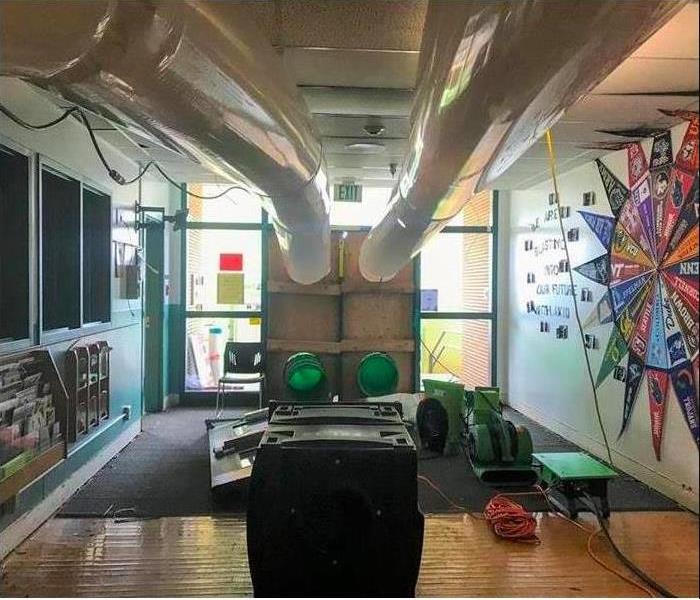 Whether you need professional cleaning to make your business shine, or emergency water restoration services, SERVPRO is here ready to help you.
Whether you need professional cleaning to make your business shine, or emergency water restoration services, SERVPRO is here ready to help you.
Can Employees Return To Work During The Restoration Process?
Business owners may wonder when employees can safely resume work in a commercial building that has experienced damage. The answer may be sooner rather than later. Depending on whether black water, storm damage, or a fire caused the damage, employees may be able to return as soon as cleanup is complete and work through the restoration period.
Water Damage
There are several types of water damage that may affect the duration of mitigation.
• Clean Category One water from a burst supply pipe should not cause a major interruption.
• Category Two gray water is considered contaminated with chemicals or microbes but does not contain solid waste. Complete disinfection prior to resuming work is often required, and interruption might not be necessary if only a portion of the property sustained damage.
• Category Three black water in flood cleanup or from a sewer backup should be extracted, and the affected area disinfected and dried.
Keep in mind that nearly all categories of water contain salts that can cause corrosion and short-circuiting in electronics. Computers, electronic devices, or servers may or may not be able to be restored, which could cause delays.
Storm Damage
If a storm causes a roof leak or breaks windows, employers should wait until cleanup and basic mitigation is complete before calling in employees. The same guidelines for water damage apply to flood damage resulting from a storm.
Other Damage
Fire or smoke damage may call for more extensive restoration and air filtration. It may take longer for a work space to be considered safe for employees following this type of damage. Consult with a restoration service to set a timeline for resuming regular business.
Employees should not work in a structure that is undergoing mitigation for black water or flood cleanup. They may be able to return during restoration. For the best results, hire an experienced commercial restoration company in Graham, WA.
What To Do About Water Damage at Your Commercial Property
6/30/2022 (Permalink)
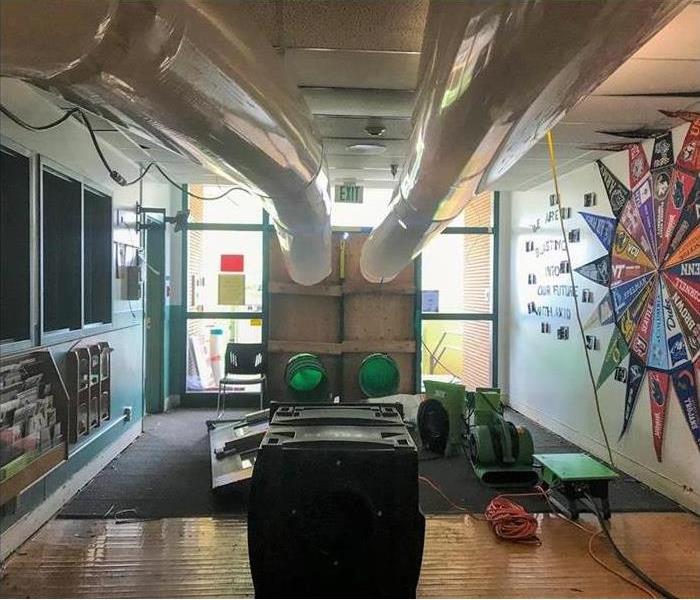 If your home or business experiences storm or flood damage, call our SERVPRO of Puyallup/Sumner team today!
If your home or business experiences storm or flood damage, call our SERVPRO of Puyallup/Sumner team today!
What Should You Do If Your Commercial Property Has Water Damage?
Anything from faulty plumbing to severe weather can quickly become a problem for your Graham, WA, commercial property. Never fear, however, because there are several ways you can prevent damage and quickly respond when disaster strikes. Below you will learn about the causes of water damage, tips for cleanup and restoration, and tools to prevent damage in the future.
Causes of Water Troubles
Here is a list of common sources and access points for water damage:
Severe weather can range from flooding to freezing temperatures and harm a building’s foundation.
Fire will set off ceiling sprinklers and may require additional use of firehoses to extinguish, thus saturating the ceilings, walls, floors, and furniture.
Broken pipes, aged plumbing, and leaking HVAC are common causes of water leaks.
Roof damage and improper window seals are access points for weather damage and water.
Tips for Water Cleanup
If water has already damaged your property, it is important to respond quickly and appropriately. An important reminder: never enter a building with standing water until cleared in case electricity is still running to the building. Your first step is to call a professional water restoration company. These crews will assess the damage, pump the water out, remove damaged materials, and use industrial cleaners and equipment to clean and thoroughly dry the affected space.
There are actions you can take to aid the cleaning progress:
- Use buckets and mops to remove excess water to allow for better drying.
- Remove loose items from the floor.
- Remove and hang wet fabrics.
- Use fans and dehumidifiers when it is safe to use electricity.
Tools for Preventing Damage
Take care of your property by scheduling regular maintenance. Annually, schedule checkups for HVAC, roofing, fire sprinklers, electrical, and plumbing. Also, have a professional inspection and restoration company perform an overall water damage inspection.
Water can cause many problems for your commercial property, but there are steps you can take to prevent this damage. Understand your property’s risk factors to better prepare for water trouble mitigation and protect your investment.
How Insurers Benefit from the SERVPRO Franchise Model
6/29/2022 (Permalink)
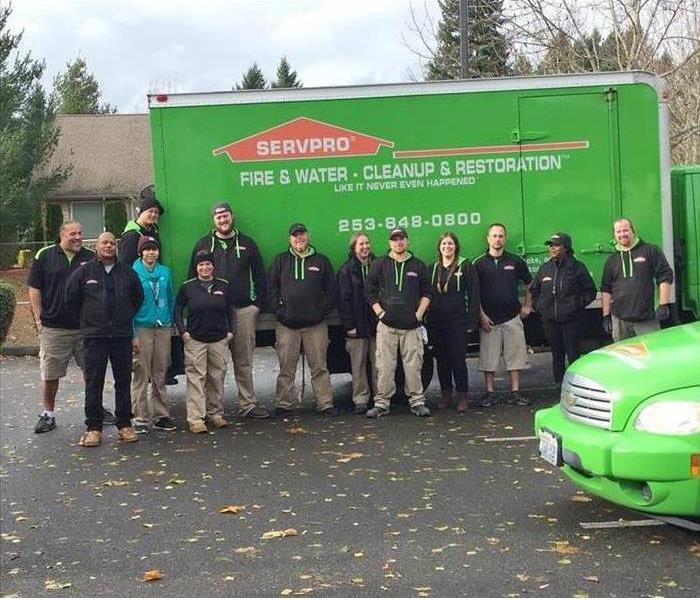 Our team prides ourselves in being "Faster to any size disaster," and provides a 24-hour emergency service 7 days a week, 365 days a year.
Our team prides ourselves in being "Faster to any size disaster," and provides a 24-hour emergency service 7 days a week, 365 days a year.
How the SERVPRO Franchise Model Benefits Insurers
When a claim is filed that requires remediation and restoration services in Sumner, WA, it means that work needs to get started fast. Since it is vital the work is done right, choosing a SERVPRO franchise ensures that happens. This innovative business model was developed to maximize every part of the restoration process. Below are four reasons to choose this franchise.
1. Locally Owned
With more than 1,900 locations throughout the United States and Canada, help is right around the corner. No matter the disaster, you can be confident that you will have 24/7 access to a person to get the claim rolling and a team of professionals within two hours of nearly any zip code.
2. Corporate Backed
Along with have a local team right around the corner, you also get the peace of mind that the team is backed by a corporate team ready to serve. From experts in insurance to large loss emergency services, corporate backing means ongoing support and expertise to handle any size of a disaster.
3. Ongoing Training
As a franchise, it must adhere to the strict standards set by corporate. That means that all local technicians have been IICRC certified and receive ongoing training. Each new franchise must participate in a 15-day training program at the corporate training facility. After that, every technician must complete regular training to maintain certifications and stay up to date on the latest in the industry.
4. Preferred Vendor
As an insurance provider, you want the claim to go as smoothly as possible. When you chose a local franchise backed by a corporate team, it means you are getting the services of an established company. With more than 50 years of experience in the industry, SERVPRO has become a preferred vendor for many companies.
A SERVPRO franchise is much more than a reliable, local team of professionals. When choosing it is a provider, you get the backing of a corporate support team and a brand name trusted for decades.
How to Deal with Weather-Related Flight Cancelations
6/24/2022 (Permalink)
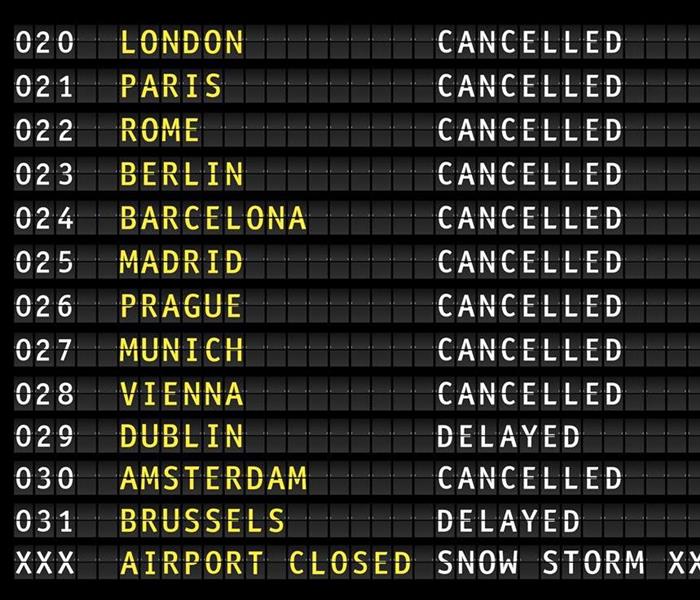 When facing a weather-related canceled flight stay calm.
When facing a weather-related canceled flight stay calm.
How to Handle Flight Cancellations Caused by Weather
With the modern convenience of around-the-globe travel, people young and old enjoy flights year-round to some of the world’s most exciting destinations. But one thing all air-travel customers have in common is the fear of a canceled flight due to bad weather. While it can happen to anyone, a flight cancelation can be both inconvenient and stressful to the average airplane passenger. If you find yourself in this common travel predicament, consider these three tips for dealing with your weather delay.
1. Contact the Airline
Once you receive word that your flight has been cancelled, you will likely be instructed to get in a line to reserve further travel arrangements. As the masses throng to the airline service desk, take out your cell phone and contact the airline directly. A customer service rep should be able to look-up the current cancelation status of your trip and assist you in rebooking immediately. When calling a commercial airline, have the following information readily available to speed up the process:
• Your personal information
• Flight itinerary including flight number
• Credit card number used to book the flight
2. Make Hotel Reservations
Now that you are sure you have a canceled flight on your hands, assess how long you are willing to sit at the airport. If you have to wait over 12 hours for weather conditions to improve or for alternate travel arrangements to take place, you may want to consider booking a hotel room. Adding exhaustion to an already stressful travel day is a recipe for disaster. Instead, stay the night in a local Puyallup, WA, hotel to feel refreshed when flights do become available again.
3. Be Polite
Finally, in all of the chaos of traveling and gathering storm tips don’t forget that at the end of the day there is only so many people can do in the case of inclement weather. It is likely the airlines are just as frazzled by the delays as the many stranded passengers. Good manners may go a long way in getting what you want in all of the disorder.
When facing a weather-related canceled flight stay calm. Follow these three simple tips to get you back on your way as soon as possible.
Do I Need Fire Insurance for my Commercial Building?
5/26/2022 (Permalink)
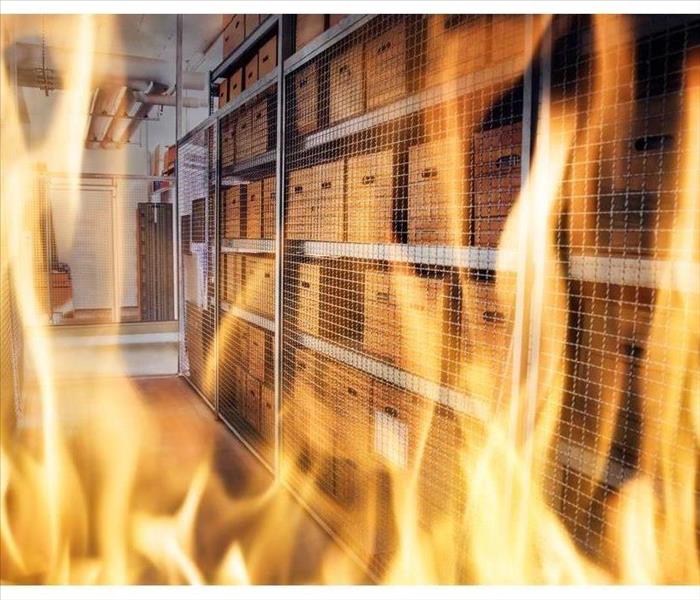 Cleanup and restoration can be completed quickly for businesses with fire insurance because the costs are primarily covered by the insurance company.
Cleanup and restoration can be completed quickly for businesses with fire insurance because the costs are primarily covered by the insurance company.
Is Fire Insurance Required For My Commercial Building?
While a mortage company will most likely require a business to carry fire insurance, once a property is free of any liens, the business owner may or may not choose to continue to carry coverage. Yet, in Graham, WA, it is in the best interest of all businesses to have fire insurance in addition to other types of business insurance.
Risks Associated With Not Having Fire Insurance
Fires remain one of the most common types of disasters businesses experience. They can also create devastating damage that can be hard to overcome without insurance.
Fire insurance protects a business in several ways:
- It covers costs associated with smoke cleanup.
- It covers repairs for structural damages.
- It covers repairs associated with fire suppression materials.
- It may also cover any fees charged for fire-fighting services.
How Do Businesses Recover From Fire?
Once a fire has occurred, many structures are uninhabitable until fire restoration takes place. It is the job of the restoration company to assess the damage, take action to prevent further damage, and finally, restore the structure to its former state, which is hospitable to the work that takes place within the structure.
For businesses that have fire insurance in their policies, the cleanup and restoration can happen quite speedily due to the expenses being mostly covered through the insurance company. The insurance company and restoration company work together to ensure that business can resume as quickly as possible.
For a business without insurance, the recovery process can be more painful to the business, assuming it has the capital to make recovery possible. Unfortunately, for many businesses, this type of disaster was not in the short-term budget.
Nobody plans to experience disasters such as fires; they simply happen and at the most inopportune times. Keeping an updated insurance policy that includes fire insurance will ensure business operations can continue despite the inconveniences of fire damage.
5 Things to Include in a Fire Damage Estimate
5/16/2022 (Permalink)
 After a fire it is crucial to take the time to properly assess all the damage that has occurred in order to get a fair restoration estimate.
After a fire it is crucial to take the time to properly assess all the damage that has occurred in order to get a fair restoration estimate.
5 Factors To Consider When Estimating Fire Damage
If you were the victim of a fire at your business in Sumner, WA, you know how overwhelming the aftermath can be. But it's crucial to take the time to adequately assess all of the damage that occurred to get a fair restoration estimate. Here are five things to include in a claim.
1. Restoration Costs
Fire isn't the only element that can cause damage to your business during a fire. Water used during firefighting can also cause damage. An emergency restoration service can be on-site to assess all the damage and outline a plan to clean and restore your space as soon as the building is deemed safe.
2. Board Up Services
Windows often break during a fire, and doors may be damaged. Your restoration estimate can include the costs of board-up services. Tarps might also be used to keep water off of damaged roofs in the event of rain.
3. Debris Cleanup
One often forgotten side effect of a commercial fire is the amount of debris left behind. All damaged materials have to be thrown away, and the lot must be cleaned before you can begin to rebuild. A debris cleanup service does the work, removes the trash, and disposes of it responsibly.
4. Storage Costs
If you had a functional sprinkler system in your building, some of your belongings are likely salvageable. After the restoration process is completed and everything is clean, you'll need a place to store office furniture, product, and equipment while your building is repaired or rebuilt.
5. Repairs After Fire Damage
Results of fire damage look different for different businesses. A business in an older building might suffer more damage that needs heavy repairs than one in a newer building. Repair costs can be included in your claim.
When you file a claim with your insurance company after a fire, it's vital to have an estimate covering every aspect of getting you back to work so that you aren't stuck with steep bills later.
3 Major Reasons Why Security Fencing Is Necessary
5/6/2022 (Permalink)
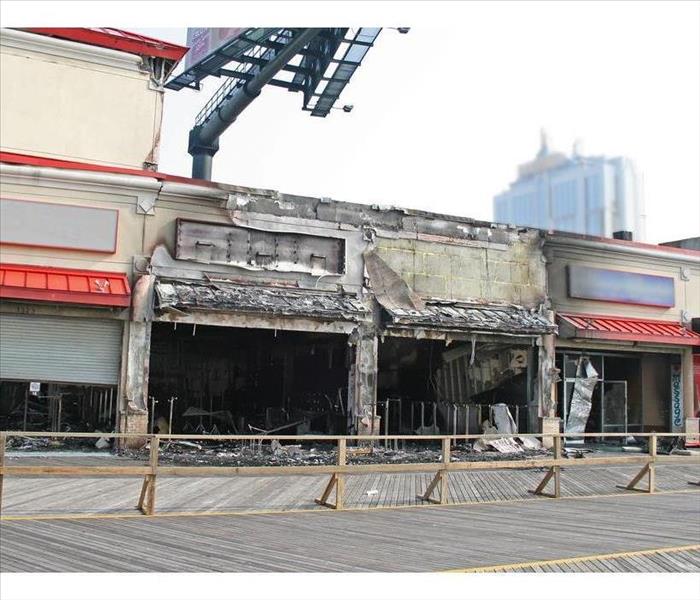 A security fence surrounding your business after a fire decreases the likelihood of intruders and all of their inherent problems.
A security fence surrounding your business after a fire decreases the likelihood of intruders and all of their inherent problems.
Three Major Reasons Why Security Fencing Is Required
When professional restoration representatives work with you to recover your business from fire and smoke damage, they may offer security fence installation around your property. While this measure might not seem as immediate as tarps and boards, it does contribute to the overall process. Explore the following reasons why fencing can protect your commercial building and assist with the restoration.
1. Damage Prevention
After a fire, the location is most likely in a vulnerable state. The broken windows, damaged walls and other unexpected openings can allow people to enter the building without permission. They might seek to destroy the property further or just explore the area, but their actions can escalate the damage, delay the reconstruction efforts and increase the overall expenses. Wild animals can also wander inside and cause similar effects. A solid fence can prevent these intrusions and their consequences.
2. Crime Deterrence
Another advantage of surrounding your business with a security fence is the deterrence of crime. Fire damage can make this place the target of criminals who aim to vandalize the property or steal any potential valuables. Additionally, there might be some equipment left overnight during the clean up or repair. Its damage or theft can set back the procedures. Fencing adds a layer of security that can help you have some peace of mind.
3. Liability Issues
A building impacted by fire, even during restoration, can be hazardous. Anyone who trespasses can be injured by weak structures, sharp edges, exposed wiring and broken gas lines. Other possible dangerous elements include ash, soot, and contaminated water. All these factors can harm interlopers, and as the property owner, you could be held legally liable for their injuries. Sufficient fencing not only reduces possible breaches, but it also demonstrates due diligence in preventing harm.
While boards, tarps and other sealing measures provide safety and protection throughout your property, there is always room for improvement. A security fence that surrounds your Puyallup, WA, business decreases the probability of intruders and all their inherent problems.
Key Differences Between Storm Damage and Flooding
4/18/2022 (Permalink)
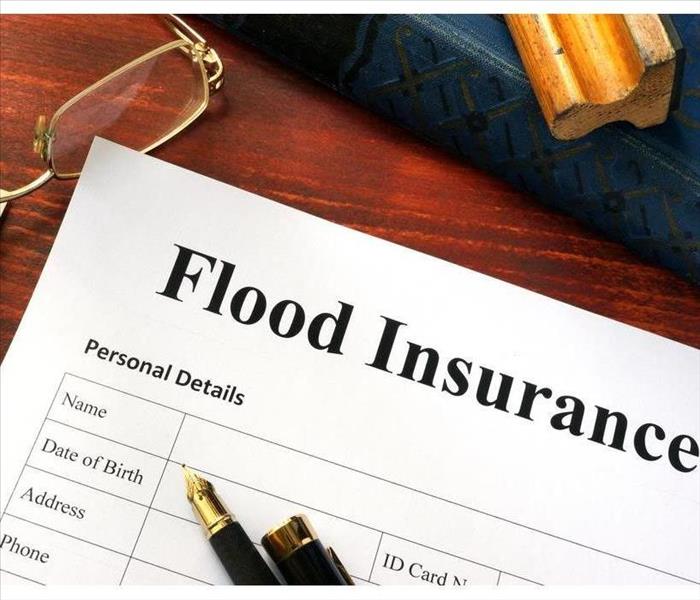 When it comes to flood damage, most businesses will need extra insurance to cover the damage.
When it comes to flood damage, most businesses will need extra insurance to cover the damage.
The Significant Differences Between Storm Damage And Flooding
Business owners in Graham, WA, know the unexpected will eventually happen, which is why staying on top of insurance coverage is essential. When the next big storm hits, understanding what your unique policy covers ensures a smoother process. An important element of that is knowing the difference between flood damage and storm damage.
Storms vs Floods
While both may unleash excessive amounts of water, which often requires the help of a storm and water damage restoration professional, the source of the water and other factors determine the type of damage. The following are considered aftereffects of a storm and are typically covered:
- Torrential rains and thunderstorms
- High winds
- Tornadoes
- Ice, hail and snow
When it comes to flood damage, most businesses will need extra insurance to cover the damage. Flooding happens from:
- Inland rivers, lakes or other waterways overflowing
- Tidal waves and hurricanes
- Rapid and extreme rainwater accumulation
- Ice or snow suddenly melt
- Surface water runoff
- Landslides or mudslides
Dirty Nature of Floods
While any unexpected water may have contaminants, floodwaters are considered Category 3 water, also known as black water. This type is highly contaminated and may pose health risks. Depending on the source of the flood, it could be carrying sewage, organic matter, pesticides and other substances that require careful cleanup.
According to FEMA, it is considered a flood if two or more acres of land that is usually dry is partially or completely saturated or it affects more than two properties. Since the cleanup and restoration is often much more extreme, it is recommended that businesses in flood-prone areas get additional insurance coverage.
After the storm hits, it is not also easy to tell if you are dealing with storm or flood damage. Knowing a few basics of how they are categorized makes it easier to prepare for the cleanup process and helps the claims process be clearer.
5 Tips for Preventing Cigarette Fires at Home
4/11/2022 (Permalink)
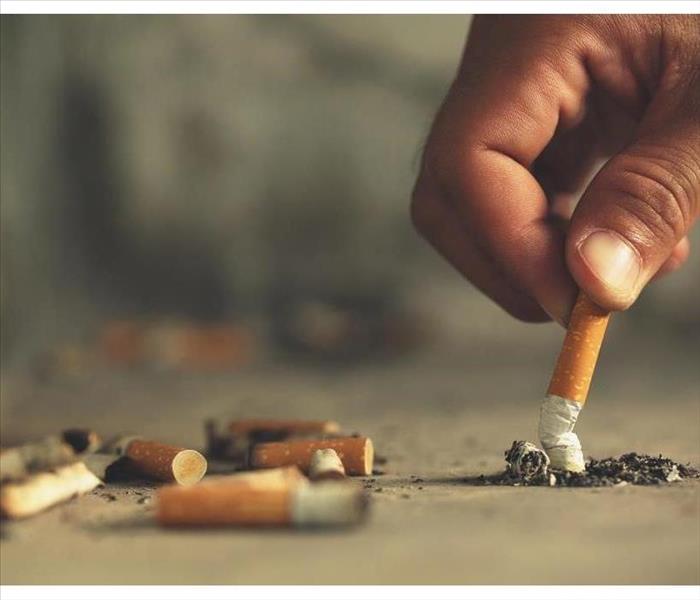 Whenever you smoke at home, there are certain factors to consider in order to prevent a cigarette fire.
Whenever you smoke at home, there are certain factors to consider in order to prevent a cigarette fire.
5 Tips For Preventing Home Cigarette Fires
Cigarettes can be deadly in more ways than one. Between 2012 and 2016, the National Fire Protection Association reported that more than 18,000 residential fires started as the result of a cigarette fire.
When the weather becomes drier in Sumner, WA, it can create the perfect conditions for a blaze to easily start in a forgotten ashtray. With that said, there are several steps you can take to avoid having to call in a fire cleanup crew the next time you take a smoke break. Here are five to consider.
1. Smoke Outside
If you really want to prevent a cigarette fire at home, stay away from the house when you are smoking. Instead, choose a designated spot that is far enough away to minimize risks.
2. Make Sure Cigarettes Are Completely Out
To avoid an unnecessary ashtray fire, always be sure your butts are completely out before walking away. To be safe, sprinkle some water on the ashes.
3. Smoke When You Are Alert
If you take medication that makes you tired, avoid smoking when you take it. Likewise, make sure you are fully alert in general whenever you smoke so you do not accidentally drop your cigarette or fall asleep.
4. Stay Away From Medical Oxygen
When someone in your home has an oxygen tank, it is best to entirely avoid smoking anywhere nearby. Even when the oxygen is off, the tank can catch on fire or explode.
5. Never Smoke in Bed
No matter how tempting the comfort of your bed might be when smoking, do not do it! Even a small spark can be enough to ignite sheets, blankets and mattress.
Whenever you smoke at home, there are certain factors to consider in order to prevent a cigarette fire. Because smoking is usually a leisure activity that can occur in comfortable settings, you should be especially mindful of flammable areas like bedrooms and risk factors like your energy levels.
How To Repair Belongings After a Flood
4/5/2022 (Permalink)
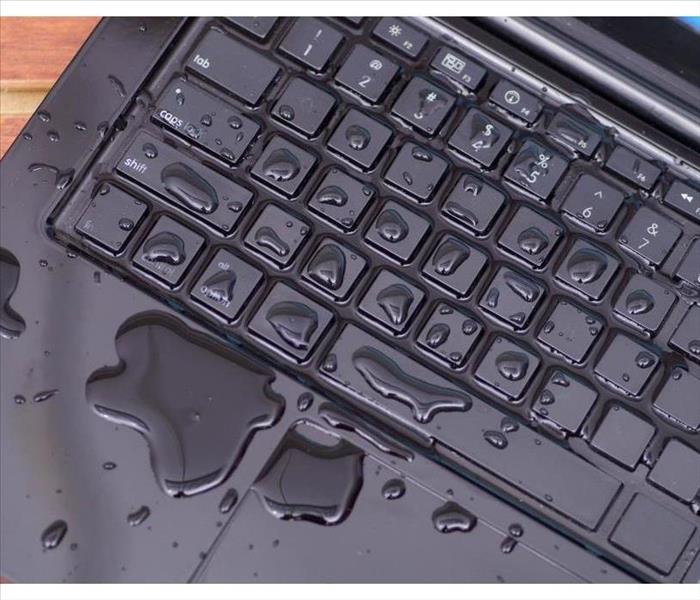 Before touching any electronics that have been in contact with water, make sure they are not plugged in to any outlets.
Before touching any electronics that have been in contact with water, make sure they are not plugged in to any outlets.
How To Repair Personal Effects After A Flood
When flooding occurs, it can damage your belongings. Whether the water in home is from a broken pipe, sewage backup, rain or another source, there are things you can do to repair your possessions.
Hire a Professional
A professional water damage restoration service can repair or replace many different types of items, including:
- Upholstered furniture
- Documents
- Photos
- Building materials
- Flooring
A water damage restoration service in Puyallup, WA, should also treat the area to prevent mold growth once the water has been removed.
Fabric
When fabric items, such as clothing or curtains, are damaged by water in home, it is best to take them to a dry cleaning service. They can help remove water stains, restoring your belongings to their original condition. Thicker fabrics, such as upholstery, may need to be treated by a professional restoration service.
Building Materials
Water can cause building materials, including drywall and wood, to deteriorate. After cleaning up flooding, check the area for signs of moisture or deterioration. If the flooding is from a broken pipe, make sure to thoroughly check the surrounding walls. Deteriorated building materials typically must be replaced.
Electronics
Before touching any electronics that have been in contact with water, make sure they are not plugged in to any outlets. If they are, turn off the power in the area first to avoid electrocution. Some electronics can be repaired by taking off battery covers and any other removable parts and allowing the water to drain out. It can also help to place devices such as laptops and mobile phones in a bowl of rice to absorb the moisture. If drying the item and replacing the batteries does not fix the device, an electronics repair shop may be able to help.
If water in home has damaged your belongings, you can fix them by hiring a professional or fixing items, such as fabric, building materials and electronics, at home.
3 Cleanup Processes for After a Business Property Fire
3/22/2022 (Permalink)
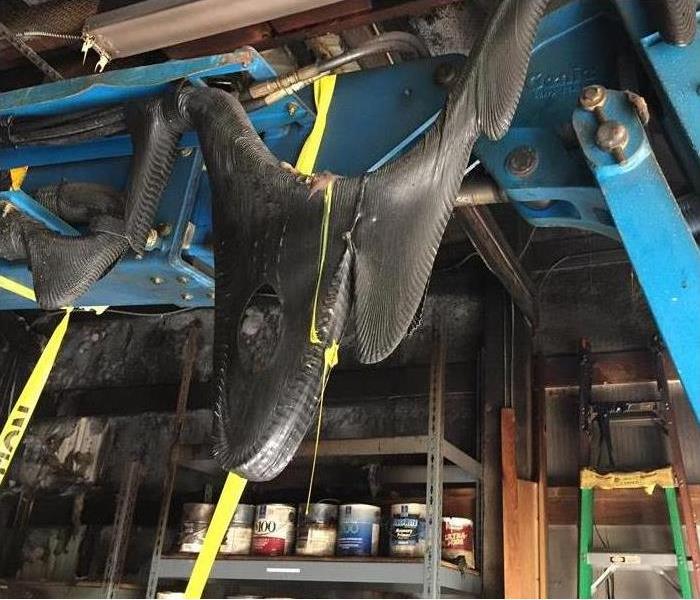 SERVPRO responded to this warehouse fire to find damages to structure and equipment. Our professionally trained fire technicians are trained in all a
SERVPRO responded to this warehouse fire to find damages to structure and equipment. Our professionally trained fire technicians are trained in all a
3 Procedures For Cleaning Up After A Business Property Fire
When cleaning up after a fire at your Puyallup, WA, business, getting everything fresh and repaired can seem like a daunting task. Fortunately, your local fire restoration service can offer a number of solutions. From dry-cleaning for cloth items, to smoke odor removal, here are a few of the restoration techniques that your fire cleanup crew may use.
1. Options for Smoke Odor Removal
In many cases, it may be necessary to remove smoke odors from the property after a fire. Many professionals utilize an ozone machine for this process when cleaning the room itself. Items inside this area may be removed, cleaned, and placed in content storage until the damage to the building has been repaired.
2. Options for Cloth Items
For cloth items such as curtains, rugs, or clothing that may have been in the building at the time of the fire, dry-cleaning can be one possible solution for removing smoke damage. Other items may be washable in a cleaning solution.
3. Options for Solid Items
When it comes to content cleaning, it may be desirable to also wash items of a solid nature. These could be furniture pieces, electronics, or even office supplies. The method used will depend on the type of article. Electronic or mechanical devices should be serviced by a professional. Furniture, shelving or cabinet pieces can be washed with a cleaning solution. Some items may be freshened with a simple wipe down, while others may require dipping in the cleaner.
Fire restoration can involve several different cleaning techniques that vary with the damaged items. Dry-cleaning is often suitable for cloth articles, while dips or wiping solutions are used for solid pieces such as furniture. An ozone machine may help clear away smoke odor from the air. If you have any questions about the right method to clean a specific item, a professional can usually help.
How To Troubleshoot Your Commercial Sprinkler System
3/12/2022 (Permalink)
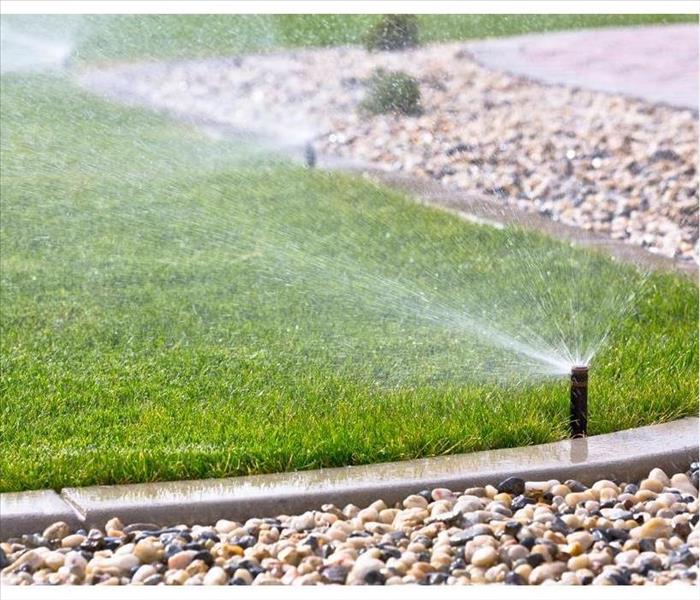 A broken irrigation system can wreak havoc on your landscape. You could end up with brown grass or a flooded building.
A broken irrigation system can wreak havoc on your landscape. You could end up with brown grass or a flooded building.
Troubleshooting A Commercial Sprinkler System
Once you bought your irrigation system for your commercial property, you may have stopped thinking about it. You figured that the sprinklers would run smoothly, and that you could focus on other aspects of your Sumner, WA, business.
Unfortunately, this is not always the case.
Irrigation problems can occur. Water could stop flowing to one part of your landscape, causing the bushes and grass to die. Malfunctioning sprinklers may even cause flooding that necessitates emergency restoration services. If your sprinklers do stop working, you can limit the water damage by fixing the problem right away. Here are some troubleshooting tips.
No Pressure
A zone failure occurs when one section of the sprinkler system no longer functions properly. Issues with any of the following could be a sign of zone failure:
The electrical impulse may be the source of the irrigation system breakdown. You can use a volt meter to test this impulse. Start by checking the wires operating the timer. Then move on to the solenoid.
It is not just electrical issues that cause failing zones. A tree root could also block the pipes in one area of the property. You may have to trim the tree or
kill the roots to solve this problem.
Sometimes, the entire sprinkler system malfunctions. If this happens, start by making sure all the valves are open. You should also use a wire locator to see if there are any cuts in the wires.
Low Pressure
If the water is flowing but the pressure is low, you should again check the solenoid. It could be loose or clogged by debris. The flow control valve may have also destroyed the diaphragm.
A broken irrigation system can wreak havoc on your landscape. You could end up with brown grass or a flooded building. Troubleshooting any issues immediately should limit the harm to your property.
3 Ways the SERVPRO Disaster Recovery Team Can Help Your Business
3/7/2022 (Permalink)
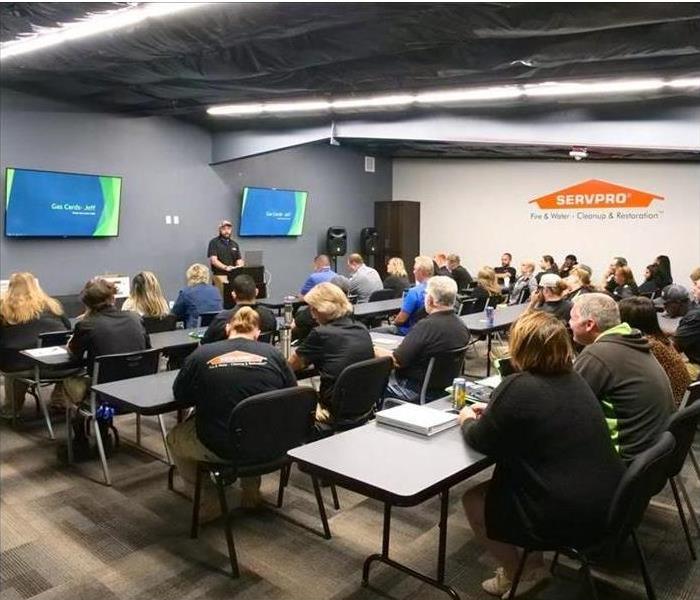 When a major disaster strikes, you need a disaster recovery team you can trust. SERVPRO has the experience and training to provide professional.
When a major disaster strikes, you need a disaster recovery team you can trust. SERVPRO has the experience and training to provide professional.
3 Ways The SERVPRO Disaster Recovery Team Can Assist Your Company
The SERVPRO disaster recovery team is staffed with the best of the best of our restoration professionals. We prequalify and strategically place our large-loss specialists to handle any size disaster quickly and professionally. These are three of the ways our team can help your business.
1. Timely Mitigation
Our network of strategically placed storm response teams is on standby 24 hours a day and 365 days a year. The ability to mobilize 1,700 locally-owned franchises ensures that no disaster is too big for our team. All large losses are supervised by a commercial operations manager who makes sure all of our clients receive seamless communication and timely mitigation. SERVPRO professionals are Faster to Any Size Disaster.
2. Experience You Can Count On
Our disaster recovery team has worked with the hospitality industry, universities, municipalities, property managers and the Pentagon. We are ready to help whether you are recovering from a hurricane, tornado, flood or blizzard. Our professionals have responded to major disasters across the country, including the California wildfires, major hurricanes, widespread flooding events, severe winter weather events and more. Our team is prepared to handle unpredictable and rapidly changing conditions.
3. National Reach With Local Expertise
The partnership between our Commercial Large Loss Division and 1,700 local franchises provides our team with the resources of a big company and the expertise of a locally owned franchise in Puyallup, WA. Our locally owned storm damage mitigation experts are the preferred vendor of many insurance companies and are prepared to utilize local partnerships with vendors and insurance professionals to best serve our clients.
When a major disaster strikes you need a disaster recovery team you can rely on. SERVPRO has the experience, resources and training to provide fast, professional mitigation services no matter what size, type or severity of disaster you are dealing with. Our team is standing by to make it “Like it never even happened.”
How To Save Books and Documents From Water Damage
2/4/2022 (Permalink)
 Document restoration is a delicate process, but SERVPRO professionals, have the training and tools necessary to do the job well.
Document restoration is a delicate process, but SERVPRO professionals, have the training and tools necessary to do the job well.
How To Prevent Water Damage To Books And Documents
When your home has been hit by flooding or other water damage, your family documents, treasured diaries, and other important books and papers are at serious risk. The moisture and humidity are certain to do serious harm. What can you do to prevent further damage? How should you handle document restoration?
Identify the Extent of the Damage
The first step is to identify the type of damage your papers, documents, and books have suffered. For the best treatment results, you need to identify how much water you'll be dealing with:
- High Moisture Content: High humidity or a light sprinkling of water through an open window could cause pages to curl or become discolored. Without attention, mold could develop in affected areas.
- Absorbed Water: A leaky window near a bookshelf or a stream of water from an upstairs room into a lower study could expose books and documents to damage within the very fibers of the papers.
- Submerged Items: Flooding is a cause of serious damages. Water gets between all the pages and works its way through entire storage boxes or file cabinets. In some cases, writing becomes so blurred that documents are no longer readable.
Contact a Professional
As soon as you can safely do so, contact a professional to dry and restore important documents and treasured papers. SERVPRO provides document restoration within their own facilities. By handling document drying internally, costs can be kept lower, and quality can be monitored directly.
Inventory Affected Books and Documents
While you wait for drying and restoration professionals to arrive, resist the urge to move papers around. When documents are wet, they are at their most fragile state. In some cases, those papers may have been exposed to toxic materials. Instead of moving books and documents, make a list of the documents that have been affected (to the best of your ability without moving them.) It's helpful to know if there are birth certificates, family histories, or financial records in the stack.
Document restoration is a delicate process, but SERVPRO professionals in Auburn, WA, have the training and tools necessary to do the job well. The best time to contact them is before further damages are done.
The 3 Most Common Home Fire Causes
2/4/2022 (Permalink)
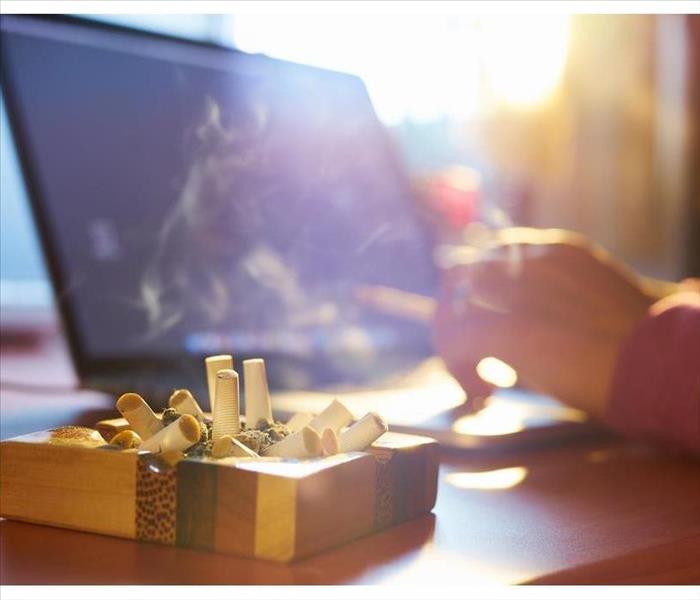 Cooking, heating, and smoking are three common fire causes.
Cooking, heating, and smoking are three common fire causes.
The Three Most Common Causes Of House Fires
The most common causes of home fires can be prevented with basic fire safety measures and equipment. Find out more about three common fire causes to make more informed home fire safety decisions.
1. Cooking
Cooking often involves a combination of hot stoves or ovens, open fire, and flammable substances, such as animal or vegetable oils or grease.
It is important to monitor food while cooking. If you are cooking something that takes a long time, periodically check in on the progress to prevent burning. Make sure that smoke detectors in this part of a home are functional. A fire extinguisher can promote kitchen safety, but may also cause grease fires to spread. Keep baking soda and salt near the stove to smother these types of fires before covering flames with a metal lid or another pot.
2. Heating
Malfunctioning furnaces or the improper use of space heaters are common causes of heating fires. Schedule regular furnace inspections and perform periodic maintenance. Only operate a space heater on a hard, non-flammable surface while attended and at a safe distance from combustible materials.
3. Smoking
Smoking is one of the most preventable causes of a home fire. Avoid smoking in bedrooms or after taking medication that may cause drowsiness. Use stable ashtrays when smoking indoors and ensure that cigarettes are completely extinguished before leaving the room. It is safest to smoke outside and provide a wind-proof disposal solution, such as a bucket filled with sand.
Cooking, heating, and smoking are three common fire causes. A homeowner may be able to prevent or limit the damage resulting from a home fire by taking precautionary measures and installing and testing fire safety equipment such as smoke detectors and fire extinguishers. A damage restoration and fire cleaning service can help if a fire breaks out for any reason at a residence in Puyallup, WA.
3 Strategies for Maintaining a Commercial Roof
1/31/2022 (Permalink)
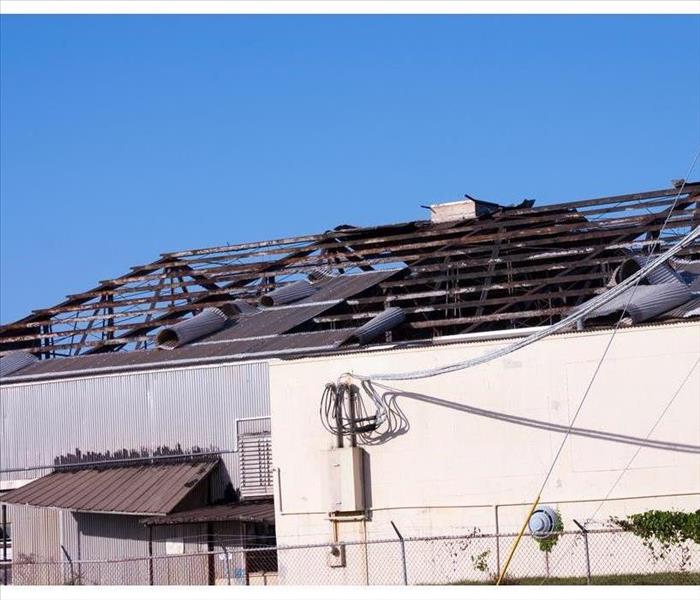 SERVPRO has a team of licensed water damage restoration professionals who are ready to restore your home or business after storm damage at any time.
SERVPRO has a team of licensed water damage restoration professionals who are ready to restore your home or business after storm damage at any time.
3 Ways To Keep A Commercial Roof In Good Shape
If high winds, torrential rainstorms and other bad weather events impact Puyallup, WA, will your commercial building be ready to withstand roof damage? Roofing materials can be vulnerable to such issues and result in leaks and flooding that could seriously harm your building’s interior. However, there are a few strategies you can use to ensure that your roof is protected.
1. Order an Annual Inspection
Having your commercial roof inspected annually can uncover flaws and problems that might grow worse during a bad weather. For example, if your building’s roof is missing some of its tiles, rain and melting snow could weaken these areas and cause leaks. A thorough inspection by a roofing professional can shed some light on the state of your roof. If you suspect your roof is leaking from a recent storm, it is wise to call in a repair company right away, as leaks can damage drywall, insulation and wiring in your building’s attic.
2. Consider a Roofing Refit
If you are concerned about your roof sustaining wind damage, you may want to consider having it refitted with tougher materials. Metal, synthetic rubber and treated asphalt roofs are all durable options that can last 20 years or more. A roof rebuild can help guard your business against all different kinds of bad weather all year round. Your local roofing contractor or a storm damage and flood remediation service can advise you on which material is best suited for your building.
3. Waterproof Your Existing Roof
If you cannot fit the cost of a new roof into your budget, then consider having your existing roof treated with a waterproof material. Many types of roof damage occur during heavy rains, when tiles, flashing and other roofing materials are harmed or weakened by running or pooled water. Having your commercial roof waterproofed can prevent these issues before they begin.
Roof damage can be costly for you as a Puyallup, WA, business owner. Protecting your building’s roof with regular inspections and other types of preventative maintenance might be the first, best defense in keeping it in good shape.
Is Commercial Smoke Damage Covered by Insurance?
1/13/2022 (Permalink)
 Luckily, the average commercial fire insurance policy takes into consideration the rapid degradation that results from smoke damage.
Luckily, the average commercial fire insurance policy takes into consideration the rapid degradation that results from smoke damage.
Is Insurance Coverage For Commercial Smoke Damage Available?
After being exposed to smoke damage from a commercial fire in Puyallup, WA, your facility may feel like it will never be the same again. Soot damage and heavy smoke odors may permeate your once functional space. Find answers to some of the most commonly asked-questions about cleaning up after a commercial fire.
Why is Smoke so Damaging?
While a commercial fire is a probable concern for the average businessowner, many may fail to recognize smoke as one of the fire’s most destructive results. Smoke can be very hazardous to these commonplace objects:
- Electronics
- Furniture
- Standard surfaces
Smoke has a polarizing charge which can actually impact the magnetism of most electronic devices. Smoke contains particles made of solids, liquids and gasses. This means that when it settles it can permeate and attach to objects it lands on. That is why smoke tends to leave an ashy film on everything it touches. This sooty film is highly acidic. Soot damage may impact the rate at which objects decay causing them to break or malfunction much sooner than expected.
Does Insurance Cover Loss From Fire Smoke?
Luckily, the average commercial fire insurance policy takes into consideration the rapid degradation that results from smoke damage. The only way to know if your policy covers damage caused by smoke is to check with the insurance company directly. Some plans even account for damage received as a result of a fire at an adjacent business.
Can a Commercial Business Be Fully Restored After Exposure to Smoke?
Although the effects of smoke vary by case, fire restoration professionals in Puyallup, WA should be able to evaluate damages and begin the smoke cleaning process. Electronics, photographs, upholstery and more can often be returned to their original state. Look for a cleanup operation that offers key services like odor removal and surface restoration.
As you cope with the consequences of a commercial fire, turn to a professional to safely restore your business. Addressing smoke damage is the first step to achieving total restoration.
Do You Know When To Flush Your Home’s Water Heating System?
1/13/2022 (Permalink)
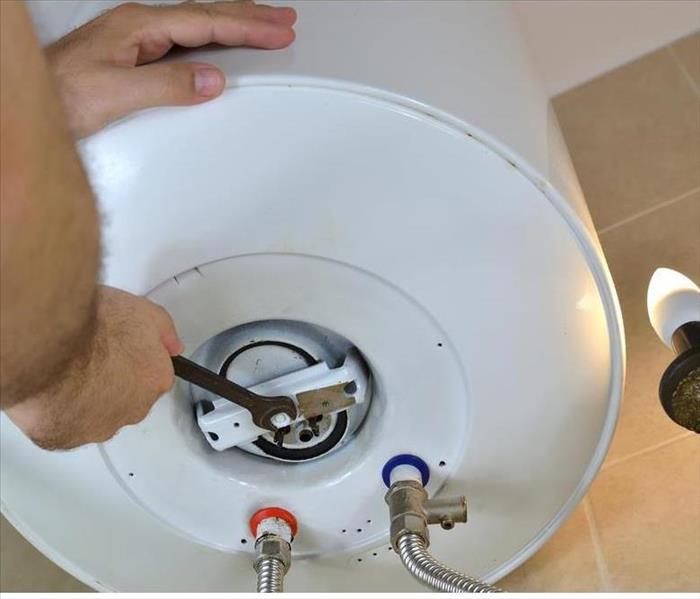 To keep your water heating system functioning properly, you must occasionally flush it.
To keep your water heating system functioning properly, you must occasionally flush it.
Do You Know When Your Home's Water Heating System Needs To Be Flushed?
Like most residents of Sumner, WA, you use hot water inside your home every day. After all, not only do you enjoy rinsing off in a soothing shower, but you also must keep dishes, clothing and other items clean. To keep your home’s water heating system in tip-top shape, you must occasionally flush your water heater.
Signs of Wear and Tear
When the water heating system in your home is functioning properly, you probably don’t think much about it. If there is a problem, though, the heater can be impossible to ignore. If you notice any of the following, your unit may need some work:
- Strange noises
- Leaks
- Rust
- Deposit buildup
- Failure to heat water
A Timetable for Flushing
To keep your water heating system functioning properly, you must occasionally flush it. While every system is different, you must think about usage to know when a water heater flush is appropriate. Use the following timetable as a general guideline:
- For households with one or two members, flush the system approximately once per year.
- For households with three to five members, flush the system approximately every eight months.
- For households with six or more members, flush the system approximately every six months.
Special Considerations
The above guidelines are effective for most homes in Sumner, WA. Occasionally, however, certain factors require homeowners to inspect and service water heating systems more frequently. If you use well water or have high levels of sedimentation in your water supply, you probably should inspect your home’s water heating system every two or three months to ensure you do not develop a water leak. If you do, you may need to contract with a reputable water restoration service to mitigate damage to your basement and other areas.
With a bit of work, you can decrease your chances of having a problem with your water heater. With regular inspections and flushing, you ensure your home’s water heating system remains in excellent shape.
Using Bread To Understand Mold
1/13/2022 (Permalink)
 All mold needs an organic food source, and most molds have favorites.
All mold needs an organic food source, and most molds have favorites.
Understanding Mold Through The Use of Bread
You have many responsibilities for maintaining your home in Graham, WA, and staying mold-free is an important one. Reviewing your experience with bread mold is a great way to understand the impact of mold in your home. Why does mold grow on bread?
1. Mold spores are everywhere.
Most people store their bread in a plastic bag, yet mold will still grow thanks to the fact that spores are lightweight and travel through the air. The little bit of exposure your bread gets from opening the bag is enough to allow spore-containing air to enter. This is similar to the way mold spores get in your home: traveling on the air and entering through doors, windows and vents.
2. Mold grows in a moist environment.
You don’t see croutons covered in mold and that’s because there is not enough moisture. People love bread when it is soft and moist, and that moisture is exactly what fungus growth needs to thrive. That’s why controlling relative humidity and repairing water leaks are both important jobs to prevent mold growth in the home.
3. Mold needs a food source.
All mold needs an organic food source, and most molds have favorites. When it comes to bread mold, there are certain varieties that tend to colonize on bread. This is also true for homes, since most building materials are made from cellulose-based materials, and the molds that prefer that food source tend to colonize there.
Can’t You Just Change the Temperature?
While most molds prefer a warmer temperature, many varieties can handle a cooler environment, which is why you find fridge mold. You can prevent mold by freezing bread, but you can’t freeze your home.
With the lessons learned from bread mold, you can see that moisture control is the key to preventing household mold problems. If you already have mold, it’s important to get help fast since mold multiplies rapidly. Expert mold remediators are knowledgeable and use a variety of techniques to help prevent the further spread of mold during the clean-up process.



 24/7 Emergency Service
24/7 Emergency Service























